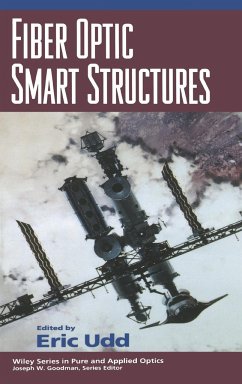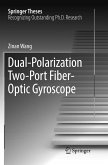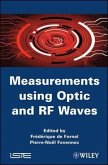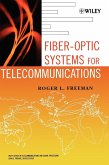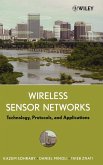Recent earthquakes and space program-related news serve as potent reminders of the uses fiber optic technology offers to an increasingly complex world. Like living organisms sensitive to subtle changes in the environment, buildings, structures, and space vehicles can be equipped to sense and react to their surroundings by means of hair-thin glass fiber sensors embedded in structural materials and capable of carrying information and measuring changes in stress and other environmental factors. Data is collected and transmitted to a central location, where the findings are assessed and damage corrected. Fiber Optic Smart Structures pools the expertise of thirty-three leading professionals, many of whom are pioneers in the field, and offers a comprehensive introduction to this fast growing technology. Beginning with a historical overview and a look at the background technology, the book goes on to discuss methods of embedding optical fibers in modern high-strength, lightweight composite materials; ingress and egress of optical fibers; and more specialized application concerns, including use of the Fabry-Perot interferometer and Bragg grating sensors. Lower cost options are considered in light of performance trade-offs, and broad area coverage through single-line stringing of multiple fiber sensors is compared with single and distributed sensor approaches. The last section of the book treats the use of fiber optic smart structures in a wide range of settings. Discussions include applications in environments where high temperature and ultrasonic waves play a role; in the aerospace industry, where changes in the structural integrity of the system demand real-time automatic changes; and a rapidly emerging new direction, earthquake-resistant buildings and, along similar lines, bridges that perform self-diagnostics. The first and only comprehensive professional reference in this important, emerging field, Fiber Optic Smart Structures is a major addition to the libraries of aerospace engineers, mechanical scientists, fiber optics researchers and engineers, architects, and structural engineers. It is also a first-rate graduate-level textbook. The first and only comprehensive reference on this important and emerging field... Fiber Optic Smart Structures is the ultimate resource for engineers, architects, researchers, and anyone with an interest in this promising new technology. Thirty-three of the world's leading professionals--many of them pioneers in the field--bring you comprehensive coverage of every important aspect of fiber optic smart structure technology, including its history and evolution, background technologies, structural and assembly issues, sensing devices, and numerous applications. Topics of particular interest include: * An introduction to advanced composite materials associated with fiber optic smart structures * Structural integrity of materials containing embedded optical fibers * Methods of fiber optic ingress and egress for smart structures * Detailed descriptions of the most useful and promising fiber optic sensors, including those based on the Fabry-Perot interferometer and Bragg grating * Extended discussions of applications, including the use of fiber optic smart structures in high-temperature environments, quality control procedures, aircraft and space vehicles, earthquake-resistant buildings, and bridges that perform self-diagnostics * And much more
Hinweis: Dieser Artikel kann nur an eine deutsche Lieferadresse ausgeliefert werden.
Hinweis: Dieser Artikel kann nur an eine deutsche Lieferadresse ausgeliefert werden.

